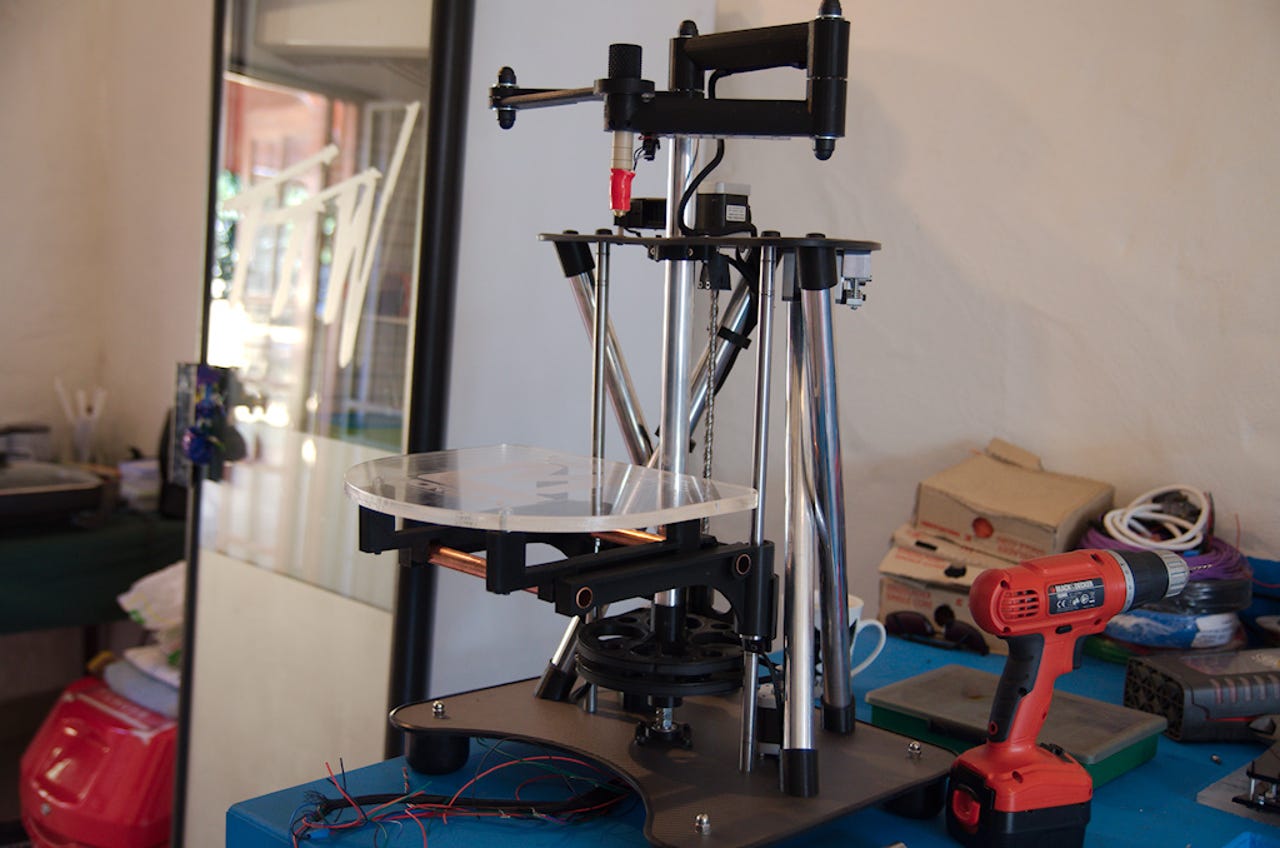3D printing in South Africa: A ground-up revolution

South African doctors have a proud tradition of medical firsts. The first heart transplant took place here, CAT scans were invented here and so was the 'cryoprobe' — a frozen needle used in cataract surgery. When they're not first, they can be pretty close: two years ago, an infant with 80 percent burns received one of the first skin grafts using tissue grown from her own stem cells.
And last week a team of surgeons at the Kimberly Hospital in the Eastern Cape became only the second in the world to perform reconstructive facial surgery using 3D-printed jaw implants.
The team are at the bleeding edge of a revolution in affordable healthcare. Right now, there's little hope for patients with mouth cancer who happen to live in poorer areas of the country. With no private medical insurance, medical implants are unaffordable.
The Kimberly doctors reckon that by 3D printing bone replacements they can cut the cost of a new jaw by 80 percent, largely thanks to reducing the amount of wasted metal when implants are milled from a block of metal.
In fact, when it comes to 3D printing in general, South Africans have a track record of which they can be rightfully proud — partly thanks to investment by academic institutions and government agencies.

Students from the University of Johannesburg, meanwhile, are about to unveil a 1m rand ($100,000) solar powered-car which has been largely built using 3D-printed materials, in order to reduce weight and increase top speed to 140km an hour.
"We've reduced the battery compartment weight by 30kg thanks to using 3D printed parts," says designer Warren Hurter. "Even the front of the steering wheel is 3D printed, so we can customise the dash."
If there is a ground zero for 3D printing in South Africa, it would be House4Hack. It's this loose organisation of makers that has helped to put the country at the forefront of affordable technology — it's impossible to mention 3D printing or maker culture here without their name coming up.
"I was tired of having to be ripped off just because I sit in South Africa and I wanted to change it."
Any local exhibitions of 3D printing will inevitably draw upon their skills, from the world's first 3D printed chocolate exhibition to the forthcoming Maker Faire Africa. When the University of Pretoria opens up its new student makerspace in time for the next academic year, part of the reason its there will be because it could draw on the expertise of House4Hackers.
South Africa can boast no less than three unique, low-cost RepRap-based 3D printers designed and sold here for personal and low-end professional use, and all have their roots in this remarkable makerspace.
The first, BabyBot, is an 5,000 rand ($500) printer designed by Peter van der Walt, an early member of House4Hack.
"I don't recall meeting any other technology enthusiast outside 'work' for many years before House4Hack was founded in 2011," van der Walt says. He says that locally built, professionally produced printers like BabyBot will help increase adoption where it's needed most.
"We have seen a lot of schools interested in buying machines the past few weeks, which to me is the next breakthrough in ZA! If we get the technology into schools, we get children to develop a fascination with it."
Tech Pro Research
Van der Walt's business, OpenHardware.co.za, grew out of a need to service the early hacker community in South Africa, which often struggled with high import costs on basic parts.
"I realised a whole host of open source electronics can be manufactured locally and sold at prices lower than we ever saw," he says. "I was tired of having to be ripped off just because I sit in South Africa and I wanted to change it."
House4Hack is both an online community and a suburban ranchhouse in Centurion, Gauteng. Upkeep on the building was originally through member contributions, but as the group has grown, so have the number of businesses which began here.
Three firms now have permanent residence, and their rent covers the cost of keeping the space open for anyone who wants to learn about 3D printing, Arduino electronics, Java programming and more.
One of those businesses is Quentin Harley's RepRap Morgan, a 3D printer designed here which won the $20,000 GADA Prize for Innovation last year. Uniquely, the hotend is mounted on a SCARA-type robot arm which reduces the number of non-printable parts — making it very low cost to build yourself.
Harley has spent the money wisely, redesigning Morgan into a commercial product which he now sells from one of the backrooms at House4Hack. This month, Harley finally quit his job and began working on Morgan and a consultancy business based around it full time.
The most famous member of House4Hack, meanwhile, is Richard van As. The former carpenter's story of how, following a work accident in which he severed the fingers on his right hand, he designed a 3D printable prosthetic was first told in Popular Mechanics and quickly spread around the world.
As with the Kimberley team, Van As' achievement has been to use 3D printing to make healthcare affordable. Van As reckons that there are at least 3,000 people producing RoboHands for amputees without medical insurance,and many more that he doesn't.
He recently attended the grand opening of a 53-machine botfarm at the College of the Ouachitas in the US, which was established with the primary purpose of producing RoboHands for global distribution.
In order to make RoboHand even more widely available, van As went on to create the ruggedised RepRap derivative, RoboBeast.
This all-terrain printer is designed specifically for creating prosthetics in extreme conditions, such as rural African villages and warzones. It's battery powered, comes with preloaded templates for RoboHands, and can even print while being tipped on its side.
While its primary purpose to to be stable and require little maintenance, the overall rigidity means that it can also produce much finer prints than many other RepRap derivatives. Van As shows me the classic nude female torso used to calibrate printers — its surface is almost smooth enough to look as if it was moulded rather than printed.
Van As' aim is to subsidise production and future design of RoboHands by selling RoboBeast printers commercially. Sadly, the first saleable units of RoboBeast have only just been completed — he would have had them on sale sooner, he says, but a long running metal workers' strike left him unable to source the relatively small amounts of extruded aluminium that forms the frame of RoboBeast.
Modest to a fault, Van As has just returned from a trip to Syria to set up four printers to manufacture prosthetics for victims of the ongoing civil war. Initial plans for the trip had included a TV crew to help promote RoboHand's work — as happened in Sudan with Project Daniel last year.
"I don't think I will be releasing the videos this time," Van As says. "It's just too sad."
Founding member of House4Hack Schalk Heunis says that there's still plenty of opportunities for other innovators to get involved. He actively encourages other spaces to open up and create new communities around the country. A Johannesburg branch of House4Hack became far more popular, he says, after it changed its name to Makerlabs and started to carve out its own identity.
"We're not competitive at all," Heunis says. "These things work because of geographical location and being easy to get to. I wouldn't go as far as to say that every suburb should have its own maker space, but certainly every common grouping within the city."
Van der Walt agrees. "It's important to keep the sense of community alive. Don't get sucked into competition and maintain a level of class and [profesionalism] at all times. That is the best way to educate the country on what is important about open source, and especially honouring the licences and giving attribution to the original creators."